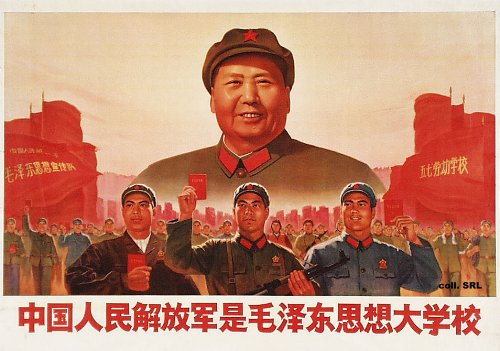By A. Nichols

When first introduced to China at the end of the 1940’s, socialism seemed like a good idea.[1] During the first decade of the revolution, beneficial reforms were made on behalf of the working class in China. In the wake of these reforms came a reign of terror and death that claimed the lives of millions. In hindsight we must ask ourselves if the High Socialist Period in China ultimately benefited the country.
During the early years of the Mao Zedong’s leadership, beneficial reforms were made in the areas of new marriage laws and land redistribution. In China women were treated little better than servants. Recognizing that women were a key part of his revolutionary society, Mao Zedong “outlawed arranged marriages.”[2]
Mao Zedong also instituted land reforms that greatly benefited the Chinese people. In the early 1950’s, rural land reforms were achieved by passing rent reductions for farmers and workers, which allowed them to increase the productivity of their land.

Many believed that the social reforms and changes Mao Zedong put in place would last and would ultimately benefit China. The myth of the new socialist order was finally exposed in 1956 and 1957 with the Anti-Rightist and Hundred Flowers movements.
During the Anti-Rightist campaign, large numbers of arrest warrants were distributed.[3] In the 1958, the Anhui province was given an arrest quota of 45,000 people. “Officials surpassed the quota with 101,000 arrests.”[4]
Following the Anti-Rightist movement came the Great Leap Forward. Ordered to produce enough iron to meet district’s quotas, communes would melt down all their kitchen and farm implements into useless lumps of iron. Communities also had grain quotas they had to meet for the Party. To gain favor, officials would exaggerate the quantity of grain their district produced. As a result, communities were left without food.
Drought, flooding, and exhausted resources led to a famine that ravaged China until 1962. At least twenty million died from starvation in what became known as the largest famine in history.

No one can deny that during the first few years of the revolution progress was made in raising the quality of life for the men and women of the working class. However, Mao Zedong’s drive to create a Communist state led to a catastrophe in China, claiming the lives of over forty-five million people.[5] The implementation of Mao’s well-intentioned reforms resulted in the death of millions and brought untold suffering to the Chinese people.
[1] China: A Century of Revolution (Three Disc Set). DVD. Directed by Sue Williams. Toronto: Zeitgeist Films, 2007.
[2] Spence. The search for modern China, 376.
[3] Wasserstrom. China in the 21st century: what everyone needs to know.
[4] Michael Fathers. “A Most Secret Tragedy The Great Leap Forward aimed to make China an industrial giant—instead it killed 45 million.” Wall Street Journal (New York City), October 16, 2012, U.S. edition, sec. Life and Culture. http://online.wsj.com/article/SB10000872396390444180004578015170039623486.html?KEYWORDS=michael+father+great+leap+forward.
[5] Fathers. “A Most Secret Tragedy The Great Leap Forward aimed to make China an industrial giant—instead it killed 45 million.”
